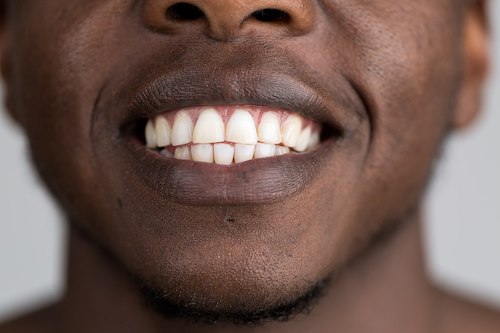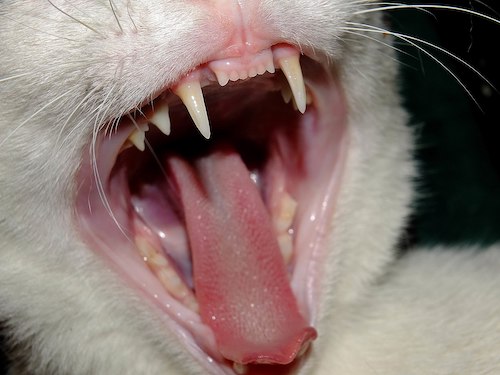Skin & Soft Tissue: Bite Wounds
Human Bite Wounds
Microbial Infection
- High Risk of Infection
- Superficial Wounds: 2%
- Occlusion Bites: 10%
- Clenched-Fist Injuries (Traumatic Puch): > 25%
- Most Common Organisms:
- Skin Flora (Staphylococcus & Streptococcus)
- Oral Flora (Eikenella corrodens, Prevotella, Fusobacterium & Porphyromonas)
Treatment
- Uninfected: Irrigation & Wound Care
- Generally Wounds Should Be Left Open to Heal by Secondary Intention & Not Be Closed Primarily
- Indications for Antibiotic Prophylaxis:
- Wounds Closed Primarily
- Wounds to Face, Hands or Genitals
- Close Proximity to Bones or Joints
- Diabetic or Immunocompromised
- Deep Wounds
- Association with Crush Injury
- Consider Tetanus, Hepatitis & HIV Prophylaxis
- Infected: Wound Care & Antibiotics
- May Require IV Antibiotics if Severely Ill or Rapidly Progressing
- Surgical Debridement May Be Required
Antibiotic Regimen (If Indicated)
- First-Line: Amoxicillin/Clavulanate (Augmentin)
- Second-Line (Penicillin Allergy): Should Cover Eikenella & Anaerobes
- Eikenella Coverage:
- Trimethoprim-Sulfamethoxazole (TMP-SMX/Bactrim)
- Doxycycline
- Ciprofloxacin
- Anaerobic Coverage:
- Metronidazole (Flagyl)
- Clindamycin
- Eikenella Coverage:

Human Teeth 1
Common Animal Bite Wounds
Microbial Infection
- Generally Polymicrobial
- Most Common Organisms: Streptococci (#1) & Staphylococci (#2)
- Other Organisms:
- Pasteurella multocida
- Bartonella henselae – From Cats
- Capnocytophaga
- Anaerobes
Dog Bites
- Most Common Animal Bite (90%)
- Most Common in Children
- Tend to Be Large & Open
- Less Likely to Become Infected
Cat Bites
- Most Common in Adult Women
- Deeper Penetration
- More Likely to Become Infected
Treatment
- Uninfected: Irrigation & Wound Care
- Indications for Antibiotic Prophylaxis:
- Wounds Closed Primarily
- Wounds to Face, Hands or Genitals
- Close Proximity to Bones or Joints
- Diabetic or Immunocompromised
- Deep Wounds
- Association with Crush Injury
- Consider Tetanus & Rabies Prophylaxis
- Indications for Antibiotic Prophylaxis:
- Infected: Irrigation, Wound Care & Antibiotics
- May Require IV Antibiotics if Severely Ill or Rapidly Progressing
- Surgical Debridement May Be Required
Antibiotic Regimen (If Indicated)
- First-Line: Amoxicillin/Clavulanate (Augmentin)
- Second-Line (Penicillin Allergy): Should Cover Pasteurella & Anaerobes
- Pasteurella Coverage:
- Trimethoprim-Sulfamethoxazole (TMP-SMX/Bactrim)
- Doxycycline
- Ciprofloxacin
- Anaerobic Coverage:
- Metronidazole (Flagyl)
- Clindamycin
- Pasteurella Coverage:

Dog Teeth 2

Cat Teeth 3
Spider Bite Wounds
Black Widow (Latrodectus)
- Appearance: Shiny Black a Red Structure on Body
- Habitat:
- All Throughout the US
- Rarely Found Indoors
- Most Commonly Found Around Homes (Garages & Sheds)
- Effects:
- Indistinct Local Lesions
- Systemic Effects are Uncommon
- Muscle Pain
- Localized Diaphoresis Around the Bite
- Muscle Rigidity
- Tetany & Seizures
Brown Recluse (Loxosceles)
- Appearance: Brown without Significant Distinguishing Features
- Habitat:
- Mostly in the Mid-West & South US
- Most Common Inside Homes
- Effects:
- Red Plaque with Central Pallor
- May Progress to Necrosis
- Systemic Effects are Rare
Treatment
- Primary Treatment: Local Wound Care & Pain Management
- Consider Tetanus Prophylaxis
- Debride Necrotic Tissue Once Fully Demarcated (Avoid Early Debridement)
- Antivenom:
- Consider for Black Widow Spiders with Moderate-Severe Envenomation Unresponsive to Supportive Cares
- None Exist for Brown Recluse Spiders

Black Widow 4

Brown Recluse 5
Snake Bite Wounds
Systemic Effects
- Tissue Necrosis
- Neurotoxicity (Ptosis, Drooling, Flaccid Paralysis or Gait Disturbance)
- Coagulopathy
- Rhabdomyolysis
- Shock
- *Effects Vary by the Snake & Venom
Treatment
- Keep Patient Calm & Still
- Immobilize/Splint the Extremity as Well
- May Consider Pressure Bandage Immobilization (PBI)
- Venom Spread & Deterioration May Occur After PBI Removal
- PBI Should Not Be Removed Until the Patient Has Received Antivenom or they Have Been Fully Evaluated with No Evidence of Envenomation
- Keep Extremity Below the Level of the Heart – Slow Lymphatic Venom Absorption
- Consider Antivenom Administration if Indicated
- Local Wound Care
- Consider Tetanus Prophylaxis
Antivenom
- Types:
- Monovalent – Developed Against a Single Species
- Polyvalent – Developed Against Multiple Different Species Sharing a Geographical Region
- Indications:
- Rhabdomyolysis
- Severe Systemic Illness
- Severe or Rapidly Progressing Local Effects
Avoid Unproven Methods
- Orally “Sucking Out” the Venom
- Mechanical Suction Devices
- Incision to Bleed
- Tourniquets
References
- Gunnarsson T. Wikimedia Commons. (License: CC BY-SA-4.0)
- Yaali. Wikimedia Commons. (License: CC BY-SA-4.0)
- Gonzalez G. Wikimedia Commons. (License: CC BY-2.0)
- Chepyle. Wikimedia Commons. (License: CC BY-SA-3.0)
- Br Recluse Guy. Wikimedia Commons. (License: Public Domain)